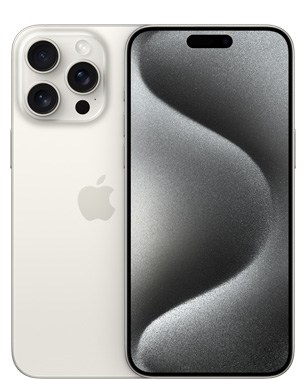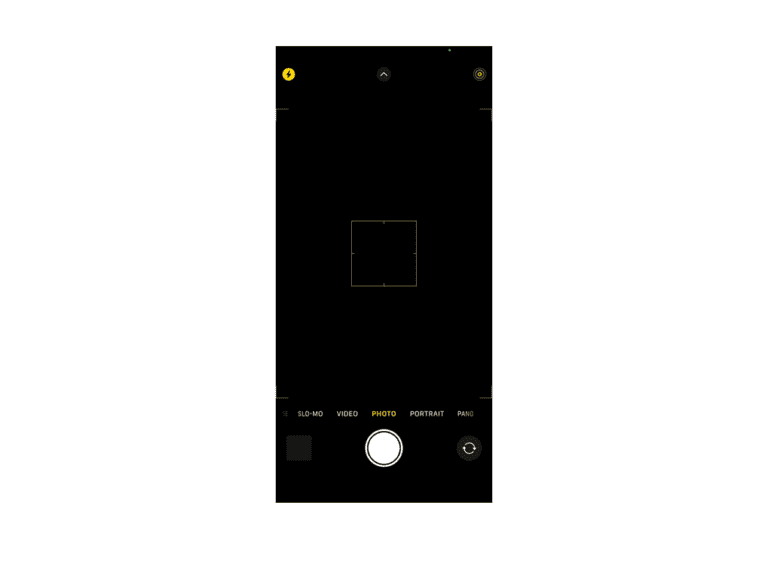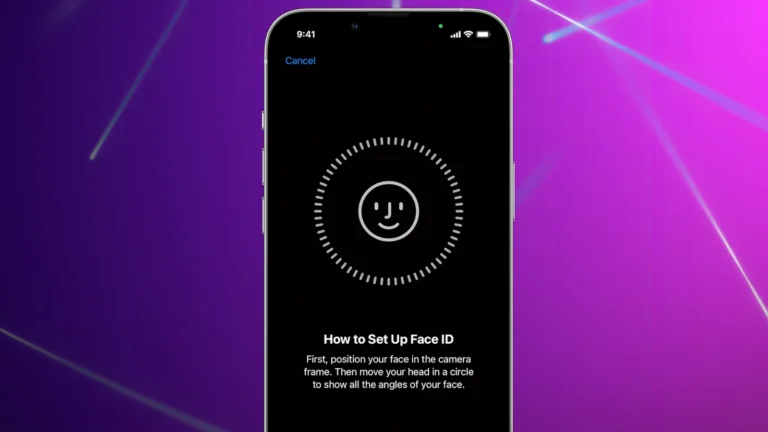Have you ever wondered about the evolution of the iPhone over the years? From its groundbreaking debut in 2007 to the latest models, each generation of the iPhone has brought something new to the table. Let’s take a walk down memory lane and explore the remarkable journey of the iPhone, generation by generation.
iPhone Generations Table
| Gen | Model(s) | Year | Important Information |
|---|---|---|---|
| 1st | iPhone | 2007 | First iPhone, 3.5″ display, 2MP camera |
| 2nd | iPhone 3G | 2008 | Added 3G network support, GPS, and App Store |
| 3rd | iPhone 3GS | 2009 | Faster processor, improved camera, and video recording |
| 4th | iPhone 4 | 2010 | Retina display, FaceTime camera, front-facing camera |
| 4S | iPhone 4S | 2011 | Dual-core processor, Siri voice assistant, 8MP camera |
| 5th | iPhone 5 | 2012 | Taller display, LTE support, Lightning connector |
| 5C | iPhone 5C | 2013 | Budget-friendly option with plastic casing |
| 5S | iPhone 5S | 2013 | Fingerprint sensor (Touch ID), faster A7 processor |
| 6th | iPhone 6, iPhone 6 Plus | 2014 | Larger displays (4.7″ and 5.5″), improved camera, Apple Pay |
| 6S | iPhone 6S, iPhone 6S Plus | 2015 | 3D Touch display, Force Touch trackpad, 12MP camera |
| SE | iPhone SE | 2016 | Smaller phone with iPhone 6S internals, affordable option |
| 7th | iPhone 7, iPhone 7 Plus | 2016 | Water and dust resistant, dual cameras (Plus model), no headphone jack |
| 8th | iPhone 8, iPhone 8 Plus | 2017 | Glass back design, wireless charging, True Tone display |
| X | iPhone X | 2017 | OLED display, Face ID, no home button |
| XR | iPhone XR | 2018 | LCD display, Face ID, affordable option |
| XS | iPhone XS, iPhone XS Max | 2018 | OLED display, Face ID, dual cameras, improved cameras |
| 11th | iPhone 11, iPhone 11 Pro, iPhone 11 Pro Max | 2019 | Dual rear cameras (11), triple rear cameras (Pro models), A13 Bionic chip |
| SE (2nd gen) | iPhone SE (2nd generation) | 2020 | Updated internals with iPhone 11 hardware, older design with home button |
| 12th | iPhone 12 mini, iPhone 12, iPhone 12 Pro, iPhone 12 Pro Max | 2020 | 5G support, MagSafe accessories, improved cameras |
| 13th | iPhone 13 mini, iPhone 13, iPhone 13 Pro, iPhone 13 Pro Max | 2021 | Super Retina XDR display, ProMotion display (Pro models), Cinematic mode video recording, A15 Bionic chip |
| SE (3rd gen) | iPhone SE (3rd generation) | 2022 | 5G support, A15 Bionic chip, smaller design with home button |
| 14th | iPhone 14, iPhone 14 Plus, iPhone 14 Pro, iPhone 14 Pro Max | 2022 | No notch for Pro models, A16 Bionic chip (Pro models), improved cameras, Emergency SOS via satellite (14 series) |
| 15th | iPhone 15, iPhone 15 Plus, iPhone 15 Pro, iPhone 15 Pro Max | 2023 | A17 Pro chip (PRO Models), New zoom camera technology, USB-C port. |
History Of iPhone: From Beginning to iPhone 15
iPhone 1st Gen (2007)
The Beginning of an Era The first iPhone, often referred to as the “iPhone 2G,” was a game-changer in the world of mobile phones. The 1st Generation iPhone was Released in 2007 and it featured a 3.5-inch screen, a 2-megapixel camera, & came in 4, 8, and 16 GB storage options. It was the first phone to offer a truly interactive touchscreen experience, setting the stage for all future smartphones.
- Launched June 29, 2007
- 3.5-inch touchscreen display
- 2MP rear camera
- No App Store
- Single model available
iPhone 3G (2008)
Faster and More Powerful The iPhone 3G, introduced in 2008, brought 3G connectivity and GPS to the iPhone lineup. It also debuted the App Store, which would become a cornerstone of the iPhone’s functionality.
- Launched July 11, 2008
- Added 3G connectivity
- App Store launched
- Available in 8GB and 16GB storage options
- Improved camera and battery life
iPhone 3GS (2009)
The 3GS, released in 2009, offered improved performance, a 3-megapixel camera with video recording, and voice control.
- Launched June 19, 2009
- Faster processor and graphics
- 3MP rear camera with video recording
- Voice Control introduced
- Available in 16GB and 32GB storage options
iPhone 4 (2010)
A Leap in Design and Technology 2010’s iPhone 4 was a major redesign, featuring a stainless steel frame and a glass back. It was the first iPhone with a Retina display and a front-facing camera.
- Launched June 24, 2010
- Sleek new design with stainless steel frame
- Retina display with 960×640 resolution
- 5MP rear camera with front-facing camera
- FaceTime introduced
iPhone 4S (2011)
The iPhone 4S, released in 2011, introduced Siri, an 8-megapixel camera, and 1080p video recording.
- Launched October 14, 2011
- Dual-core A5 processor
- 8MP rear camera with 1080p video recording
- Siri voice assistant introduced
iPhone 5 (2012)
Bigger and Better The iPhone 5, 5C, and 5S, released between 2012 and 2013, brought a larger 4-inch screen, a lighter aluminum body, and the introduction of the Lightning connector. The 5S was the first to feature Touch ID and a 64-bit processor, while the 5C offered a variety of color options.
- Launched September 21, 2012
- Taller 4-inch display
- Aluminum unibody design
- Lightning connector introduced
- Available in 16GB, 32GB, and 64GB storage options
iPhone 5C and iPhone 5S (2013)
Cool Colors. Powerful Performance 2013 brought us the iPhone 5C (featured colorful plastic casings) and the premium iPhone 5S. While sharing similar internal specs and iOS 7 software, the 5S boasted a powerful A7 chip, Touch ID fingerprint sensor, and a more sophisticated metal construction, solidifying its position as Apple’s flagship device.
iPhone 5C
- Launched September 20, 2013
- Budget-friendly model
- Available in multiple colors
- Same internal specs as iPhone 5
iPhone 5s
- Launched September 20, 2013
- Touch ID fingerprint sensor introduced
- A7 processor
- Improved camera
- Available in 16GB, 32GB, and 64GB storage options
iPhone 6 and 6 Plus (2014)
Entering the Phablet Era 2014 saw the launch of the iPhone 6 and 6 Plus, with significantly larger screens of 4.7 and 5.5 inches, respectively. They introduced NFC for Apple Pay and improved camera stabilization, marking Apple’s entry into the phablet market.
- Launched September 19, 2014
- Larger displays: 4.7 inches for iPhone 6 and 5.5 inches for iPhone 6 Plus
- A8 processor
- Improved camera with optical image stabilization on iPhone 6 Plus
- Available in 16GB, 64GB, and 128GB storage options
iPhone 6S and 6S Plus (2015)
Introducing 3D Touch The iPhone 6S and 6S Plus, released in 2015, introduced 3D Touch, which allowed the screen to sense different levels of pressure. They also featured upgraded 12-megapixel cameras and a stronger aluminum body.
- Pioneered 3D Touch: The iPhone 6S and 6S Plus introduced 3D Touch, a pressure-sensitive display that recognized different levels of pressure, offering new ways to interact with the phone.
- Boosted Performance: Featuring the A9 chip, the devices delivered significantly faster processing speed and improved graphics performance compared to their predecessors.
- Enhanced Cameras: Both models received camera upgrades, including a 12-megapixel rear camera for capturing high-resolution photos and 4K video recording.
- Larger Display Options: Compared to previous iPhones, the 6S offered a 4.7-inch display while the 6S Plus featured a larger 5.5-inch display, catering to user preferences for screen size.
iPhone SE (2016)
Compact Powerhouse The first-generation iPhone SE, launched in 2016, packed the power of the iPhone 6S into the smaller body of the iPhone 5S. It was a hit for those who preferred a smaller, more affordable iPhone without sacrificing performance.
- Launched March 31, 2016
- Small form factor with iPhone 5s design
- Powerful A9 processor same as iPhone 6s
- 12MP rear camera with 4K video recording
- Touch ID fingerprint sensor
- Available in 16GB, 64GB, and 128GB storage options
iPhone 7 and 7 Plus (2016)
Ditching the Headphone Jack The iPhone 7 and 7 Plus, released in 2016, controversially removed the headphone jack, pushing towards a wireless future. They also introduced dual cameras for the Plus model and improved water resistance.
- Launched September 16, 2016
- Water resistant
- Dual cameras on iPhone 7 Plus
- A10 Fusion processor
- Redesigned home button with Taptic Engine
- Removed headphone jack
- Available in 32GB, 128GB, and 256GB storage options
iPhone 8 and 8 Plus (2017)
Wireless Charging Arrives In 2017, the iPhone 8 and 8 Plus added wireless charging and improved the cameras and processor. They retained the physical home button and overall design of the previous models.
- Launched September 22, 2017
- Glass back for wireless charging
- True Tone display
- Improved cameras
- A11 Bionic processor
- Available in 64GB and 256GB storage options
iPhone X (2017)
A Bold Redesign The iPhone X, also released in 2017, was a radical redesign with a near-bezel-less display, Face ID, and no home button. It marked the 10th anniversary of the iPhone and set the tone for future designs.
- Launched November 3, 2017
- All-screen design with notch
- OLED display
- Facial recognition technology “Face ID”
- TrueDepth camera system with Animoji and Portrait mode
- A11 Bionic processor
- Wireless charging
- Available in 64GB and 256GB storage options
iPhone XR, XS, and XS Max (2018)
Refining the X Design 2018’s iPhone XR offered a more affordable alternative to the XS and XS Max while retaining the key features of the iPhone X. The XS and XS Max featured OLED screens and improved dual cameras.
- Launched September 21, 2018
- iPhone XR: Budget-friendly option with LCD display
- iPhone XS and XS Max: Super Retina displays with Face ID & Dual Cameras
iPhone 11, 11 Pro, and 11 Pro Max(2019)
Advancing Photography The iPhone 11, 11 Pro, and 11 Pro Max, released in 2019, focused heavily on camera improvements, with the Pro models featuring a triple-camera setup. They also offered better battery life and more powerful processors.
- iPhone 11: Successor to the iPhone XR with a dual camera system
- iPhone 11 Pro: More powerful camera system with triple lenses
- iPhone 11 Pro Max: Largest iPhone ever with a triple-lens camera system
iPhone SE 2nd Gen (2020)
Modern Performance, Classic Design The iPhone SE 2nd Gen was a budget-friendly option packed the powerful A13 Bionic chip, offering flagship-level performance at a fraction of the price. While sporting the familiar look of the iPhone 8, it offered an improved camera with Portrait Mode and a significant boost in battery life for extended use.
- Affordable Powerhouse: The iPhone SE 2nd Gen offered the powerful A13 Bionic chip, found in flagship iPhones, at a more accessible price point.
- Classic Design with Modern Specs: It retained the familiar design of the iPhone 8, with a 4.7-inch display and Touch ID fingerprint sensor, paired with modern hardware like the A13 chip and up-to-date iOS versions.
- Improved Camera: While retaining a single-lens rear camera system, it received upgrades like Portrait Mode and improved image processing for better photo quality.
- Long-lasting Battery Life: The iPhone SE 2nd Gen offered a significant upgrade in battery life compared to its predecessor, allowing for longer usage on a single charge.
iPhone 12, 12 Mini, 12 Pro, and 12 Pro Max (2020)
5G and a New Design The iPhone 12, 12 Mini, 12 Pro, and 12 Pro Max, introduced in 2020, brought 5G connectivity and a return to a flat-edged design. The 12 Mini was notable for packing the same features as the 12 into a smaller form factor.
- All-new design with flat edges
- 5G connectivity
- Super Retina XDR displays on Pro models
iPhone 13, 13 Mini, 13 Pro, and 13 Pro Max (2021)
Enhanced Performance and Camera In 2021, the iPhone 13 series improved on the 12’s design with brighter displays, smaller notches, and enhanced camera systems. The Pro models also introduced ProMotion technology for a smoother display experience.
- Improved cameras with larger sensors and sensor-shift stabilization on Pro models
- Smaller notch
- A15 Bionic chip for even faster performance
iPhone SE 3rd Generation (2022)
The iPhone SE 3rd Generation, released in 2022, continued Apple’s tradition of offering flagship-level performance in a compact and affordable package. Powered by the same A15 Bionic chip found in the iPhone 13 series, it delivered exceptional speed and responsiveness. The camera system received a significant upgrade, boasting a 12-megapixel sensor capable of capturing high-quality photos and videos. Notably, it introduced 5G connectivity for super-fast internet speeds, making it a future-proof option for budget-conscious users.
- Affordable option with the power of iPhone 13
- 5G connectivity
- Improved cameras
iPhone 14, 14 Plus, 14 Pro, and 14 Pro Max (2022)
Making Everything Better The iPhone 14 series offered 6.1-inch or 6.7-inch display options on the A15 Bionic chip (or A16 Bionic chip in the Pro models). These phones had powerful camera systems across all the models and groundbreaking new safety features like Crash Detection and Emergency SOS via satellite, and exceptional battery life.
- iPhone 14: Successor to the iPhone 13, featuring an improved dual-lens camera system and a faster A15 Bionic chip.
- iPhone 14 Plus: New size option with a 6.7-inch display, offering the same features as the iPhone 14 but with a larger screen.
- iPhone 14 Pro: Features a more powerful A16 Bionic chip, a triple-lens camera system with a new telephoto lens and improved ultrawide lens, and a 120Hz ProMotion display for smoother scrolling.
- iPhone 14 Pro Max: Offers the same features as the iPhone 14 Pro but with a larger 6.7-inch display.
iPhone 15, 15 Plus, 15 Pro, and 15 Pro Max (2023)
Welcome to the future The iPhone 15 series (released in September 2023) marked a significant evolution for Apple’s smartphone lineup. The standard iPhone 15 and 15 Plus offered improved performance with the A16 Bionic chip, enhanced cameras with larger sensors, and a more streamlined look. The iPhone 15 Pro and 15 Pro Max continued to push the boundaries of technology, boasting a periscope telephoto lens for superior zoom capabilities, a solid-state button design for improved durability and haptic feedback, and a premium titanium frame for a luxurious feel.
- iPhone 15: A16 Bionic chip, a larger battery for longer battery life
- iPhone 15 Plus: Larger version of the iPhone 15 with the same features and specifications.
- iPhone 15 Pro: A17 Pro chip. New periscope telephoto lens for improved zoom capabilities, a solid-state button design for improved durability and haptic feedback, and a titanium frame for a more premium feel. Under display Face ID.
- iPhone 15 Pro Max: Larger version of the iPhone 15 Pro with the same features and specifications.

Frequently Asked Questions
- What was the first iPhone to remove the headphone jack? The iPhone 7 and 7 Plus were the first models to remove the headphone jack.
- Which iPhone introduced Face ID? Face ID was introduced with the iPhone X.
- What is the significance of the iPhone SE? The iPhone SE combined the smaller form factor of earlier models with the power of newer ones, appealing to those who preferred a more compact phone.
- Did the iPhone 8 series have a home button? Yes, the iPhone 8 and 8 Plus retained the physical home button.
- What year did the iPhone first support 5G? The iPhone 12 series, introduced in 2020, was the first to support 5G.
- Which iPhones had a triple-camera setup first? The iPhone 11 Pro and 11 Pro Max were the first to feature a triple-camera setup.
- What is the difference between the iPhone 12 and 12 Mini? The iPhone 12 Mini offers the same features as the iPhone 12 but in a smaller form factor.
- What new screen technology did the iPhone 13 Pro models introduce? The iPhone 13 Pro models introduced ProMotion technology for a smoother display experience.
- Are all new iPhones water-resistant? Starting with the iPhone 7, all subsequent releases have some degree of water resistance but the level of water resistance varies between models. See our iPhone water resistance chart for details.
- What was unique about the iPhone 14 series at launch? The iPhone 14 series innovated with satellite connectivity, crash detection, Dynamic Island design, A16 Bionic chip, and upgraded cameras for an unprecedented smartphone experience.
- What is the most recent iPhone series as of 2024? The most recent series, as of my last update, is the iPhone 15 series.







